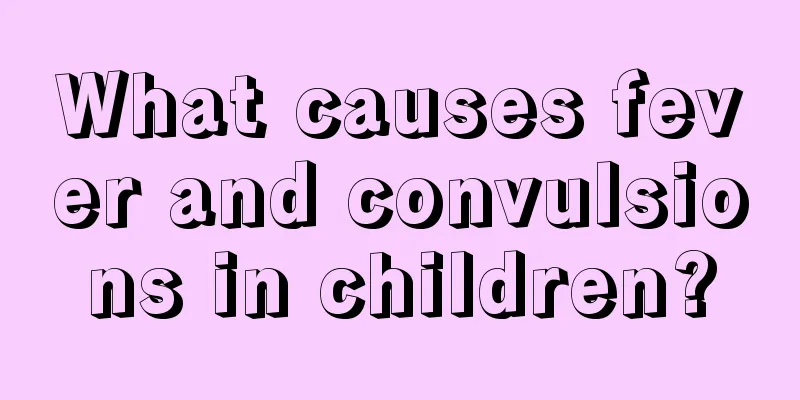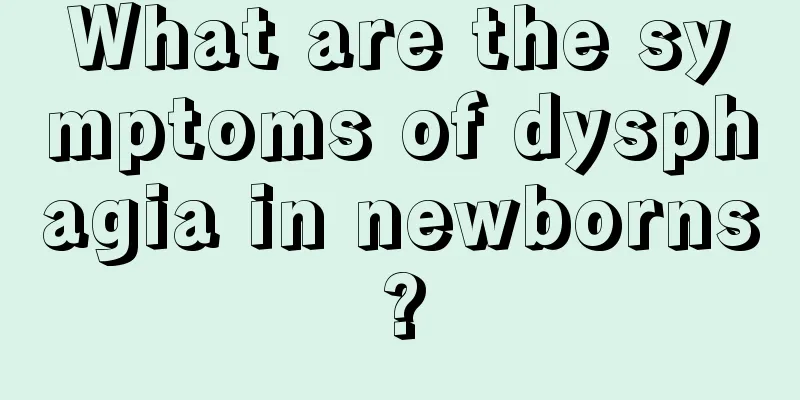What are the early symptoms of brain tumor in babies?

|
With the development of medical technology, the probability of children being diagnosed with brain tumors is getting higher and higher. Brain tumors usually grow in the human brain, so they are easily ignored. By the time they are discovered, the brain tumor is already very serious, especially for some low-necked children. Sometimes there is no way to communicate with their parents. At this time, they can only rely on careful observation by their parents. What are the early symptoms of baby brain tumors? 1. Vomiting: This is the most common manifestation of intracranial tumors in children. It tends to occur in the early morning in the early stages, and as the disease progresses, it can appear at any time of the day and is intermittent and recurrent. For children, vomiting in the form of projectiles from the mouth and nose is common, accompanied by headaches. We all know that this is a manifestation of increased intracranial pressure, but in clinical practice, about 10% of children with brain tumors only have repeated vomiting without headaches; this is often because the vomiting center at the bottom of the fourth ventricle is compressed and stimulated by the tumor, causing vomiting. Therefore, when a child has unexplained repeated vomiting, especially accompanied by headache or dizziness, parents should take their children for head imaging examinations. 2. Headache: Headaches are very common in adults, most of which are vascular neuralgia or neurosis. However, for children, the organic lesions in headaches are significantly higher than those in adults, and severe headaches are accompanied by vomiting. Infants or young children are unable to express the feeling of headache to their parents, and often become irritable, slap their heads, pull their hair, and cry constantly. Parents should be aware that persistent irritability in infancy may indicate that the child has a headache, but the child cannot communicate with you yet. 3. Visual impairment and visual field loss: Vision loss is very common in childhood brain tumors, and manifests as blurred vision. Parents can easily notice this when their children cannot see the words on the blackboard at school. When young children are playing, parents should consciously let their children grab some designated toys to identify whether the baby has signs of vision loss. Visual field loss refers to the range of space that can be seen when the head and eyes are still. It includes horizontal and vertical fields of vision. Some childhood brain tumors can cause centripetal shrinkage of the visual field. During examination, it is common for children to have optic disc edema, which is often accompanied by bleeding. In a relatively short period of time, it can develop into secondary optic atrophy, causing serious damage to vision. Because children often cannot cooperate with this examination, it is sometimes necessary to ask an ophthalmologist to dilate the pupil and examine the child under an examination mirror. Before determining that a child is nearsighted, parents must conduct a brain tumor exclusion test with the help of a neurosurgeon. 4. Head enlargement: The sutures of adults have healed bone, and increased intracranial pressure rarely causes suture dehiscence. However, the skulls of children are mostly healed fibrously, and increased intracranial pressure can cause suture dehiscence and thus enlarge the head. Parents must check their baby's head circumference regularly after birth and compare it with the standard scale to see if the child's head circumference exceeds the normal value. 5. Double vision: Diplopia is the formation of two overlapping images when viewing an object. This is caused by the brain tumor causing increased intracranial pressure, which results in varying degrees of compression and paralysis of the abducens nerves on both sides of the eyes. It is often manifested by esotropia (often called "crossed eyes") and diplopia. 6. Neck resistance and forced head position: Neck resistance can be simply understood as neck stiffness. Intracranial tumors in children often occur in the posterior cranial fossa, which can directly or indirectly stimulate the cervical nerve roots and cause neck resistance. Sometimes, children with brain tumors are forced to fix their head and neck in one position, often in the prone position. This is a spontaneous compensatory mechanism of the body's function, which can keep the cerebrospinal fluid circulation unobstructed; if the body position is changed to the other side, the tumor will exert pressure on healthy tissues, causing cerebrospinal fluid circulation obstruction. For this type of children, parents must be vigilant, otherwise there is a risk of brain herniation at any time. 7. Epileptic seizures: Parents must pay attention to epilepsy that occurs without any triggering factors, whether it is a major epileptic seizure, twitching of a certain limb, or localized facial twitching. This type of epilepsy is not the same as the common "febrile convulsions" caused by high fever. Febrile convulsions are not epilepsy. Because meningiomas are less common in children than in adults, the probability of epilepsy due to brain tumors is only 10%. However, the symptoms of epilepsy cannot be ignored. At least CT and EEG should be performed to rule out intracranial tumors. 8. Changes in consciousness: When the intracranial pressure increases due to the tumor, children often become irritable, easily angered, and cry for no reason; some children become drowsy or even indifferent. Because children have a strong ability to compensate for increased intracranial pressure, the symptoms may be hidden under the manifestations of changes in consciousness. If they appear in a very bad spirit, have a slow pulse and high blood pressure, it means that they have entered the early stages of coma and must be treated immediately and emergency treatment to reduce intracranial pressure must be carried out, otherwise the condition will suddenly worsen. 9. Unsteady walking Parents should also be wary of the possibility of a brain tumor if their child walks with an unstable gait, moves left and right like a scissors, has inflexible and poorly coordinated movements, and has uncoordinated movements of the limbs on the same side. If the child is unable to stand steadily with his hands stretched forward and falls to one side, then the child may have an uncontrolled brain tumor. If the intracranial pressure increases at this time, it often indicates that there may be a tumor in the cerebellum or brainstem. 10. Drinking and urinating frequently Suprasellar germ cell tumor is almost 100% the first symptom, and craniopharyngioma will appear at a lower incidence in the late stage. For children, primary diabetes insipidus should not be used as a diagnosis. Imaging examinations must be performed to rule out the possibility of intracranial tumors. 11. Abnormal growth and development This is a symptom that many of us are aware of. When the tumor affects the pituitary gland and hypothalamus, it will be obvious during the child's growth and development period. Developmental delay, short stature, underdeveloped sexual characteristics, precocious puberty, and gigantism are all manifestations of developmental abnormalities. It is worth noting that a small number of chronic tumors can cause obesity and developmental delay in children. Although they are rare, they still need attention. |
<<: Will a child who has had chickenpox again have it?
>>: Why does my five-month-old baby have swollen eyes?
Recommend
What is the normal body temperature for a 3-year-old baby?
Babies with poor resistance often suffer from col...
What should I do if my baby's head sweats?
With the continuous birth of new babies, parents ...
Reasons why babies don't sleep during the day
In fact, in daily life, if such a situation occur...
How much milk powder is normal for babies
Many friends who are first-time mothers will want...
What to do if your child has precocious puberty
Many parents may not know much about precocious p...
Will children become stupid if they eat too much meat?
We all know that children should supplement nutri...
What should I do if my child has a fever and suddenly has convulsions?
Babies have relatively weak resistance, so they c...
How long should children take calcium supplements?
When it comes to calcium supplementation, there a...
Should babies wear socks when sleeping?
The development period of children is the most co...
Black spots in the eyes of children
The eyes are the windows to the soul. People'...
Baby care methods
Babies should pay special attention to their dail...
What should I do if my two-year-old baby has eczema on his back?
There are many causes of eczema, and especially w...
One-year-old baby cries with eyes closed in the middle of the night
A newborn baby brings joy to a family, but new mo...
What causes red bumps on baby’s feet?
Dear mothers, have your babies ever had red bumps...
What is the reason for black spots on the child's face?
Children are the apple of their parents’ eyes. Al...









